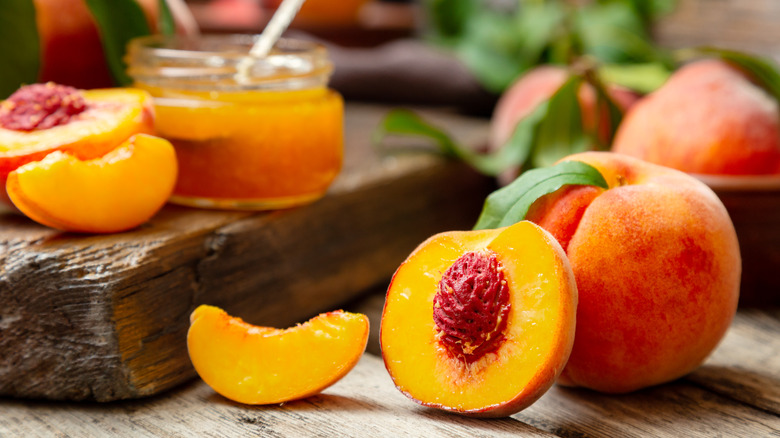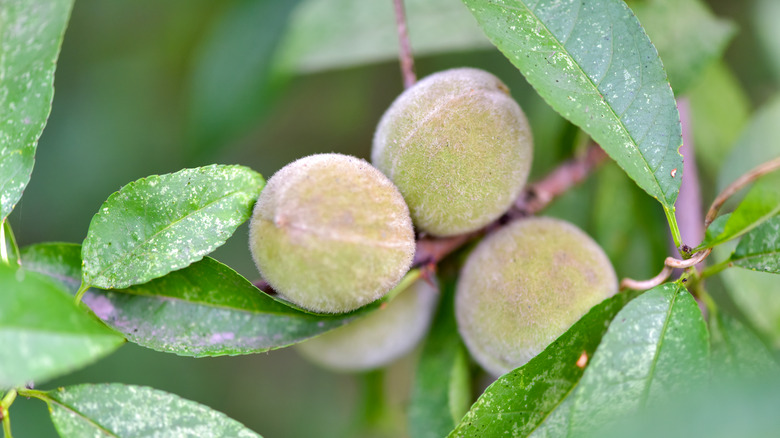What Makes Wild Peaches So Different From Grocery Store Peaches
The peaches we consume as a summertime decadence are not the same as those early humans originally found. The first attempt to domesticate peaches took place in China, and they look quite different from those we eat today; however, the peach varieties we would easily recognize came into prominence early in human history. Good Fruit Grower wrote in 2015 about how an excavation in the Yangtze River Valley, which is close to Shanghai, yielded evidence that peaches were being cultivated at least as early as 7,000 years ago.
This goes against the pro-modernity bias that ancient humans of that time were pure hunter-gatherers who didn't know how to influence their environment. "The reality is that they were modern humans with the brain capacity and talents we have now," Dr. Gary Crawford, anthropologist at the University of Toronto Mississauga, told Good Fruit Grower. It seemed that people quickly figured out they could graft the trees that produced pleasing peaches. This led to a boom in cultivated peaches that are much more pleasant to eat than their wild alternatives.
How exactly do wild peaches differ from cultivated ones?
The wild peach looks almost nothing like the peach we find in today's local farmers markets and grocery stores.
In a piece highlighting how selective breeding has altered produce, Vox presented a direct comparison of the two. Vox noted that while the original peach only grew in China, peaches now grow in 13 countries across six continents. They now grow about four times as tall as the wild peach's 25 millimeters. Their skin evolved from being waxy and inedibly to being soft and edible. Similarly, the amount of edible flesh within the peach grew from 64 percent to 90 percent while the stone decreased in size relative to the peach's whole, specifically from 36 percent to 10 percent. A final difference is that, because of the size difference, there is now more water and a little bit more sugar in the peach, making it both juicier and sweeter to bite into.
An interesting difference not brought up by Vox but by Good Fruit Grower is that the maturation date of modern peaches varies more than that of wild peaches. So, not only is the modern peach a more enticing product, but varieties mature at different rates, which allows stores to sell fresh peaches for a longer period of time. That is the real triumph.

